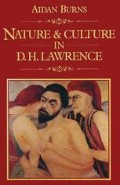Abstract
In Sons and Lovers society, when it begins to structure and determine the nature of the self, is almost always seen as destructive of those possibilities for life which a self liberated from it might attain. But in Paul’s painting there is an exception; for through it society presents him with a mode of personal growth. It is the one instance in the novel where something which derives from society and culture also offers uncontaminated opportunities for such growth. However some hesitation is caused by the fact that the position which Paul’s painting occupies in the transmission and development of that social mode to which it belongs is never clearly shown. We are never made aware of the community to which Paul as painter belongs nor of the precise nature of his problems in painting and their possible bearing on the problem of life. We might put it differently by saying that, while we are told often enough that Paul’s concern with painting is serious, we are never shown anything which would lead us to suspect that the problems to which he addresses himself as an artist are any more significant than those of a mere dabbler. The reason for this is undoubtedly that Lawrence says painting when he means writing and that, therefore, the precise nature of the aesthetic mode to which he refers and its particular bearing on life cannot be clearly indicated. On balance then, when we set the creative potential of Paul’s painting against the destructive force of the social aspirations of Gertrude and Miriam, the self seems more disabled than strengthened by those elements of social life which are allowed to become constitutive of it.
Access this chapter
Tax calculation will be finalised at checkout
Purchases are for personal use only
Preview
Unable to display preview. Download preview PDF.
Notes
D. H. Lawrence, The Rainbow (London, 1915), (Harmondsworth, 1949 ) p. 9.
L. Wittgenstein, Philosophical Investigations translated by G. E. M. Anscombe (Oxford, 1953) para. 109.
S. Kierkegaard, Concluding Unscientific Postscript (Copenhagen 1846), translated by D. F. Swenson (Princeton, 1941 ) p. 182.
D. H. Lawrence Apocalypse (Florence, 1931), (Harmondsworth, 1974 ) p. 94.
D. H. Lawrence St Mawr (London, 1922), in St Mawr and The Virgin and the Gipsy (Harmondsworth, 1950 ) p. 160.
Copyright information
© 1980 Aidan Burns
About this chapter
Cite this chapter
Burns, A. (1980). The Self and Society: The Rainbow. In: Nature and Culture in D. H. Lawrence. Palgrave Macmillan, London. https://doi.org/10.1007/978-1-349-05309-4_4
Download citation
DOI: https://doi.org/10.1007/978-1-349-05309-4_4
Publisher Name: Palgrave Macmillan, London
Print ISBN: 978-1-349-05311-7
Online ISBN: 978-1-349-05309-4
eBook Packages: Palgrave Literature & Performing Arts CollectionLiterature, Cultural and Media Studies (R0)

